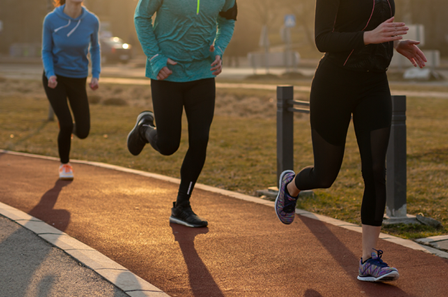Runners often focus on logging miles, but neglecting core strength and stability can lead to injuries and hinder performance. That’s where Pilates comes in. This low-impact, core-centric workout offers a wealth of benefits for runners, enhancing everything from power and Efficiency to injury prevention. Here’s a detailed look at five key benefits of incorporating Pilates into your running routine:
- Strengthening Your Core: The Foundation of Running Efficiency
A strong core is the cornerstone of efficient running. Pilates focuses on strengthening the inner core muscles, such as the transverse abdominis, obliques, and multifidus. These muscles act as a stabilizing force, preventing excessive torso rotation and lateral movement while running.
How it helps:
Improved Stability: A strong core allows for a more stable pelvis and spine, reducing energy wasted on unnecessary movements.
Enhanced Power Transfer: Power generated from your legs can be more effectively transferred through a stable core, leading to a more powerful stride.
Reduced Risk of Injury: Having a strong core safeguards your lower back and helps minimize the likelihood of typical running injuries, including IT band syndrome and pain in the lower back.
Pilates exercises to focus on: The hundred, plank variations, and abdominal curls with leg extensions.
- Enhancing Flexibility and Range of Motion: Preventing Injuries and Improving Stride
When your muscles are tense and your range of motion is limited, your stride may become restricted, raising the likelihood of injury. Pilates focuses on lengthening and strengthening muscles, improving flexibility and joint mobility.
How it helps:
Increased Stride Length: Improved hip flexibility and hamstring length can lead to a longer, more efficient stride.
Reduced Muscle Imbalances: Pilates helps to balance muscle strength and flexibility, preventing imbalances that can lead to injuries.
Improved Joint Mobility: Increased flexibility in the hips, ankles, and spine allows for smoother, more efficient movement.
Pilates exercises to focus on: Leg circles, spine stretch forward, and hip openers.
- Improving Posture and Alignment: Reducing Strain and Enhancing Efficiency
Proper posture and alignment are crucial for efficient running. Pilates emphasizes proper spinal alignment and body awareness, helping runners maintain a neutral spine and upright posture.
How it helps:
Reduced Strain on Joints: Correct posture decreases the strain on joints, which lowers the likelihood of injuries caused by repetitive movements.
Improved Breathing: An upright posture allows more profound, more efficient breathing, delivering more oxygen to working muscles.
Enhanced Efficiency: Maintaining good posture reduces energy wasted on unnecessary movements, allowing you to run more efficiently.
Pilates exercises to focus on: Shoulder bridge, swimming, and standing arm work.
- Building Balance and Stability: Preventing Falls and Improving Coordination
Running requires balance and stability, especially on uneven terrain. Pilates exercises challenge your balance and proprioception (your body’s awareness of its position in space).
How it helps:
Improved Coordination: Pilates exercises improve coordination and neuromuscular control, allowing smoother, more efficient movements.
Reduced Risk of Falls: Enhanced balance and stability mitigate the risk of falls, especially on trails or uneven surfaces.
Enhanced Ankle Stability: Many pilates movements work the small stabilizing muscles of the feet and ankles, improving ankle stability.
Pilates exercises to focus on: Single-leg balance exercises, tree pose variations and reformer balance work.
- Promoting Mind-Body Connection: Enhancing Focus and Reducing Stress
Pilates emphasizes mindful movement, requiring focus and concentration. This mind-body connection can translate to improved focus and mental clarity during your runs.
How it helps:
Reduced Stress: Pilates’ focus and controlled movements can help reduce stress and promote relaxation.
Improved Focus: The mind-body connection developed through Pilates can enhance focus and concentration during your runs, helping you stay present and engaged.
Better Body Awareness: Increased body awareness helps runners identify and address muscle imbalances or areas of tightness before they lead to injuries.
By incorporating Pilates into your training regimen, you can cultivate a more potent, more stable, and more efficient running form. Whether you’re a seasoned marathoner or a beginner, Pilates offers a valuable tool for enhancing your performance and enjoying a more injury-free running experience.




